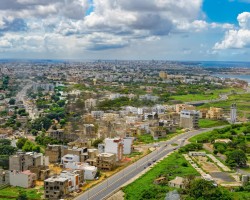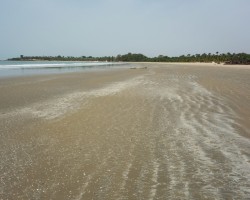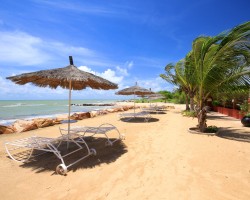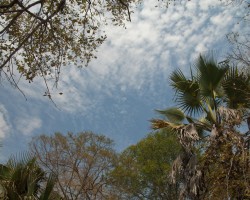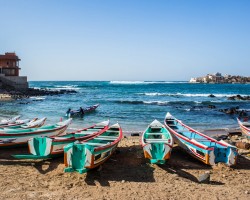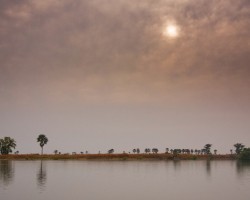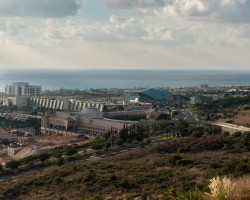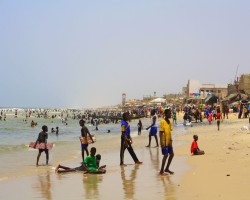Best time to go to Senegal for a perfect weather and where to go?
When is the best time to go to Senegal?
There is not really a best time to go to Senegal. Indeed, the country can be explored all year round, it all depends on which region you want to visit and what experiences you want to have!
When to go to Senegal if you want to visit the entire country? In this case, it is better to choose the period from November to March, during the dry season, as from the end of the month temperatures rise in the center as well as in the southeast, and rains can impact your travels, especially inland.
From early June to late October, it is the rainy season, but it is also a period that corresponds to the low tourist season. Even if the heat and humidity can be uncomfortable, it is possible to consider a trip to Senegal. If you are looking for authenticity, you will experience unforgettable moments there, away from the crowds!
Conversely, Senegal is very popular during the winter months with tourists in search of sun and warmth. During the end-of-year holidays, airfare, accommodation, and activity prices soar! If you plan to go at this time, budget accordingly.
For very pleasant weather without breaking the bank, it is best to travel to Senegal during the shoulder seasons: in March, April, May, September, and October. Depending on your itinerary and time spent there, you can then avoid rain and extreme heat.
Where and when to go based on the weather?
Cap Vert-Thies
Dakar, Saly Portudal, Joal Fadiouth...
Casamance
Cap Skirring, Kolda (Casamance), Kafountine...
Central of Senegal
Sokone, Koungheul, Saloum Delta National Park...
North of Senegal
Saint-Louis, Matam, Louga...
South East of Senegal
Tambacounda, Kedougou, Niokolo-Koba National Park...
To get all the information about the climate and weather in Senegal for a specific month, click on the corresponding link below:
Senegal in january Senegal in february Senegal in march Senegal in april Senegal in may Senegal in june Senegal in july Senegal in august Senegal in september Senegal in october Senegal in november Senegal in december
Best time to travel to Senegal by cities
Climate and Weather in Senegal
Surrounded by Mauritania, Guinea-Bissau, The Gambia, Mali, and Guinea, Senegal's climate is intertropical with three variations depending on the regions:
- A semi-arid climate characterized by dry and hot weather, but with reasonable temperatures. The rainy season is not very pronounced, and rainfall remains low.
- A tropical humid and dry climate with intense rainy seasons and dry winters.
- An arid climate, typical of the desert. It is characterized by high, even scorching temperatures and almost no rainfall.
Overall, it is always hot in Senegal, and the sunshine rate is absolutely exceptional. There are two distinct seasons:
- The dry season from October to June. During this period, the weather in Senegal is marked by very little rainfall and constant sunshine. The only downside is the "harmattan" wind. Laden with sand and dust, it can sweep through northern Senegal, especially in January and February.
- The rainy season, or hivernage, lasts from June to September. It brings powerful thunderstorms, varying levels of rainfall, and even tornadoes. Among the disadvantages are the condition of the roads, which can make some journeys difficult, and stagnant water that increases the presence of mosquitoes and the risk of malaria. But there are also advantages: fewer tourists, less dust, and most importantly, flourishing vegetation!

Climate in the Cap Vert-Thiès region
It is in this part of the country that the capital, Dakar, is located, as well as one of the most popular seaside resorts, Saly. Stretching along the Atlantic coast, the climate in this region of Senegal experiences slightly lower temperatures than elsewhere, with the thermometer rarely exceeding 35°C. Indeed, it benefits from the presence of the trade winds blowing along the coast, bringing a bit of freshness.
Thanks to its semi-arid climate, the Cap Vert-Thiès region is less affected by the rainy season. It is therefore entirely possible to visit in July and August during the summer holidays.
Climate in southern Senegal
The climate in the south of the country is tropical, humid, and dry. Seasons are more pronounced there than in other regions, with variations depending on the location:
- In Casamance, all months are favorable except for July and August. Indeed, the rainy season is very strong there, although it helps to alleviate the ambient heat. If you want to enjoy the beach during this period, it is better to avoid the seaside resort of Cap Skirring and head further north. Outside the rainy season, the region offers magnificent adventure opportunities with perfect weather.
- In the southeast of Senegal, the good season is much shorter, extending from October to February. The rest of the time, the heat is very intense, with temperatures often exceeding 40°C, especially between March and May. In August, torrential rains fall on the region, making it strongly discouraged for tourists.
Climate in northern Senegal
Benefiting from an arid climate, it is the north of Senegal that experiences the driest weather in the country, especially in the extreme north and in the Matam region, near the border with Mauritania.
During the rainy season, rainfall remains low, occurring about once a week on average. However, thunderstorms can be particularly violent for one or two hours. Thanks to these low precipitations and temperatures rarely exceeding 40°C, it is possible to visit northern Senegal all year round.
Climate in central Senegal
The central part of the country, north of The Gambia, has two types of climates: semi-arid on the Sokone side, in the west of the region, and tropical, humid, and dry towards Koungheul, in the far east. The most favorable months to visit are January, February, July, September, November, and December. The rest of the time, the weather is rainy or very hot.
Temperatures and rainfall in Senegal
On these 3 graphs, we present the evolution of temperatures of Senegal and month-by-month rainfall for the cities of Dakar, Cap Skirring, Saly Portudal, Tambacounda and Joal Fadiouth, as well as the month-by-month sea temperature for coastal cities.
Peak visitor numbers and tourist seasons in Senegal
Find out when Senegal has its high tourist season (the period when the influx of tourists is highest) and off-peak tourist season using our data and figures.
Tourist seasons in Senegal
The months with low numbers of tourists are: January, March, April, May, June, July, September, October and November. The number of visitors to Senegal is high in: February, August and December.
- Very low season in Senegal: March, May, June, September and October.
- Low season in Senegal: January, April, July and November.
- High season in Senegal: February and August.
- Peak season in Senegal: December.
Figure: Visitor index for Senegal month by month
Average price for flights to Senegal
A return flight between London and Dakar is generally cheaper if you go in november ($ 491 on average): this is the best time for travellers on a tight budget. In contrast, you may end up paying $ 390 more for your airline ticket to Dakar if you go in august.
Find the best price for your flight Flight prices to Senegal
Where to go in Senegal?
This table allows you to see the maximum temperature for each city and our opinion on the weather month by month (see colour legend below the table).
| Cities | jan. | feb. | mar. | apr. | may | jun. | jul. | aug. | sep. | oct. | nov. | dec. |
| Dakar | 27°C | 25°C | 25°C | 25°C | 25°C | 27°C | 28°C | 29°C | 30°C | 31°C | 30°C | 28°C |
| Cap Skirring | 30°C | 30°C | 29°C | 29°C | 29°C | 29°C | 29°C | 29°C | 30°C | 31°C | 32°C | 32°C |
| Saly Portudal | 33°C | 33°C | 34°C | 34°C | 33°C | 32°C | 31°C | 31°C | 32°C | 35°C | 35°C | 34°C |
| Tambacounda | 37°C | 39°C | 41°C | 43°C | 43°C | 41°C | 36°C | 33°C | 34°C | 38°C | 39°C | 37°C |
| Joal Fadiouth | 33°C | 33°C | 34°C | 34°C | 33°C | 32°C | 31°C | 31°C | 32°C | 35°C | 35°C | 34°C |
| Kafountine | 29°C | 28°C | 28°C | 27°C | 27°C | 28°C | 29°C | 29°C | 30°C | 31°C | 32°C | 30°C |
| Kedougou | 37°C | 39°C | 41°C | 42°C | 41°C | 39°C | 34°C | 31°C | 32°C | 35°C | 37°C | 36°C |
| Kolda (Casamance) | 37°C | 39°C | 42°C | 43°C | 42°C | 40°C | 35°C | 32°C | 33°C | 36°C | 38°C | 37°C |
| Koungheul | 36°C | 38°C | 41°C | 42°C | 42°C | 40°C | 36°C | 34°C | 34°C | 38°C | 39°C | 37°C |
| Louga | 33°C | 35°C | 36°C | 37°C | 37°C | 36°C | 34°C | 34°C | 35°C | 38°C | 37°C | 34°C |
| Matam | 33°C | 36°C | 39°C | 41°C | 43°C | 42°C | 39°C | 38°C | 39°C | 40°C | 37°C | 34°C |
| Niokolo-Koba National Park | 37°C | 39°C | 41°C | 42°C | 41°C | 39°C | 34°C | 31°C | 32°C | 35°C | 37°C | 36°C |
| Saint-Louis | 33°C | 35°C | 36°C | 37°C | 37°C | 36°C | 34°C | 34°C | 35°C | 38°C | 37°C | 34°C |
| Saloum Delta National Park | 29°C | 29°C | 29°C | 28°C | 28°C | 29°C | 29°C | 29°C | 30°C | 31°C | 32°C | 31°C |
| Sokone | 36°C | 38°C | 41°C | 43°C | 42°C | 40°C | 36°C | 34°C | 35°C | 38°C | 39°C | 36°C |
| Lompoul | 33°C | 35°C | 36°C | 37°C | 37°C | 36°C | 34°C | 34°C | 35°C | 38°C | 37°C | 34°C |
| M'bour | 33°C | 33°C | 34°C | 34°C | 33°C | 32°C | 31°C | 31°C | 32°C | 35°C | 35°C | 34°C |
| Somone | 33°C | 33°C | 34°C | 34°C | 33°C | 32°C | 31°C | 31°C | 32°C | 35°C | 35°C | 34°C |
| Ziguinchor | 37°C | 38°C | 39°C | 39°C | 38°C | 36°C | 32°C | 31°C | 32°C | 35°C | 36°C | 36°C |
Legend:
perfect weather
good weather
tolerable weather
bad weather
very bad weather
About Senegal
What can I do in Senegal?
Beaches / swimming
Nature and countryside
Culture and heritage
Sports
Family travel
Crafts / shopping
Gastronomy
Nightlife
Is this weather information for Senegal reliable?
Climate data for Senegal has been gathered every day since January 2009. The analysis of these meteorological data for Senegal allows us to determine the average for each month in Dakar, Cap Skirring, Saly Portudal, Tambacounda, Joal Fadiouth, Kafountine, Kedougou, Kolda (Casamance), and 11 other cities.
So yes: this data is reliable except in cases of temporary climate disruption in the region.
